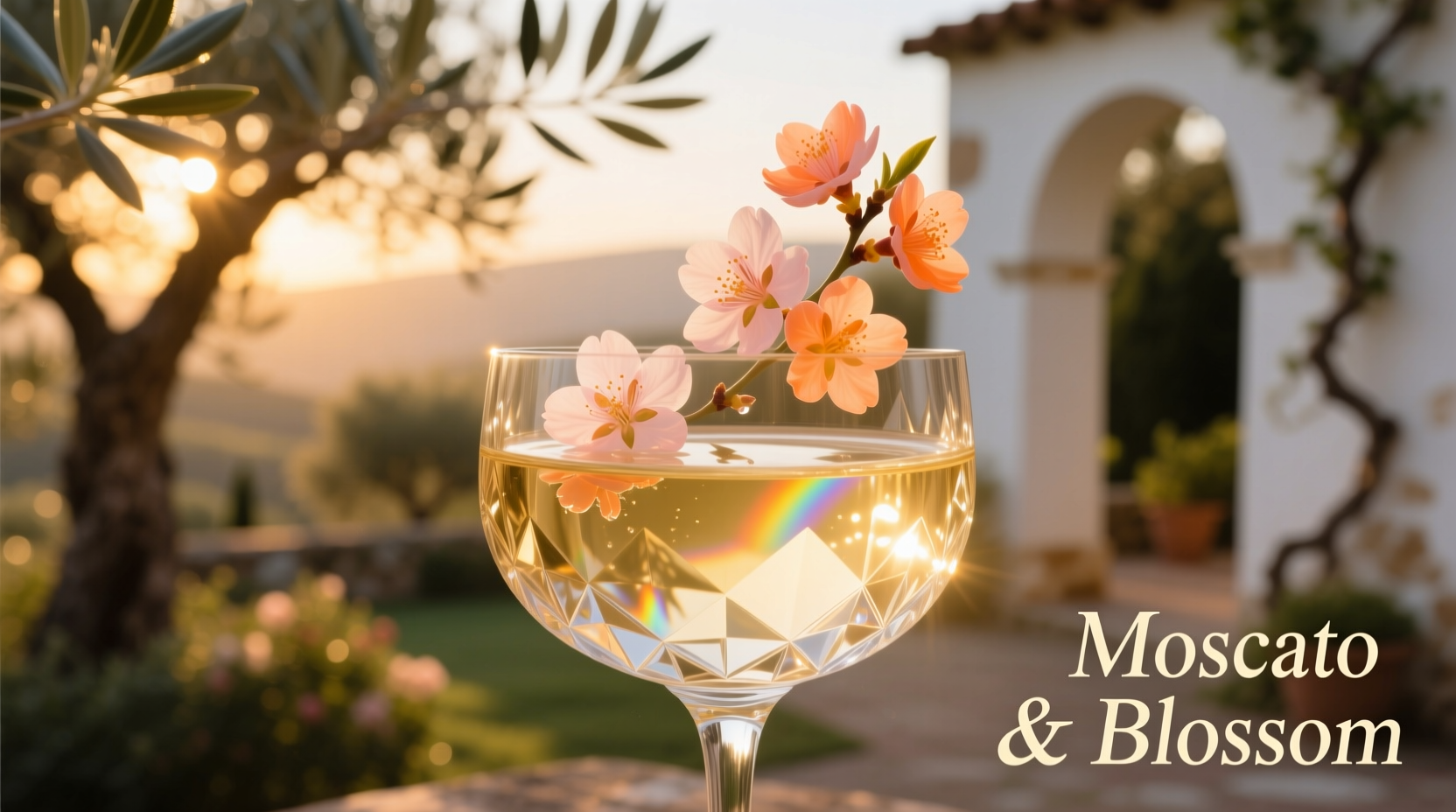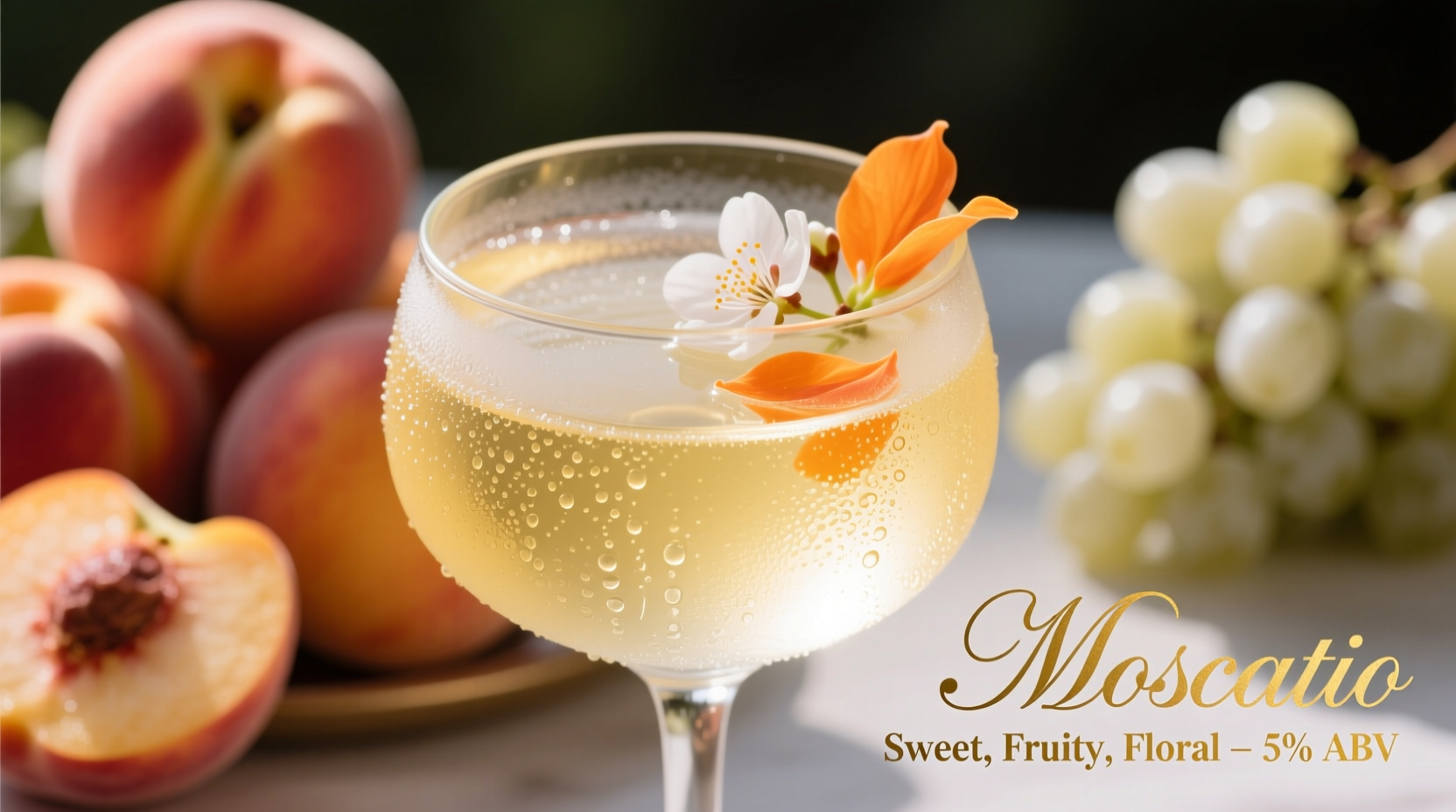Your First Sip: Understanding Moscato's Signature Flavor Journey
When you take your first sip of Moscato, you'll immediately notice its signature sweetness balanced by refreshing acidity. Unlike dry wines that leave your mouth feeling crisp and clean, Moscato coats your palate with flavors of ripe white peaches, nectarines, and orange blossom. The best Moscatos maintain a delicate balance—sweet without being cloying, with enough acidity to keep each sip refreshing rather than heavy.
Most Moscatos feature subtle effervescence, ranging from still to fully sparkling. This gentle fizz enhances the wine's fruit-forward character while lifting the sweetness, creating what sommeliers call "perceived freshness." The alcohol content typically stays low (5-7% ABV), contributing to Moscato's reputation as an approachable, easy-drinking wine perfect for beginners.
Moscato vs. Other Popular Wines: Flavor Comparison
| Wine Type | Sweetness Level | Primary Flavor Notes | Best For |
|---|---|---|---|
| Moscato d'Asti | Very Sweet | Peach, Orange Blossom, Honey | Beginners, Dessert Pairing |
| Riesling (German) | Semi-Sweet to Sweet | Green Apple, Lime, Petrol | Spicy Food Pairing |
| Pinot Grigio | Dry | Lemon, Pear, Almond | Seafood, Light Appetizers |
| Prosecco | Dry to Off-Dry | Green Apple, Honeydew, Floral | Cocktail Hour, Celebrations |
This comparison shows why Moscato stands out among popular white wines. While Riesling offers similar sweetness levels, Moscato's distinctive peach and orange blossom notes create a more approachable profile for those new to wine. The University of California's viticulture research confirms that Moscato's unique flavor profile comes from the Muscat Blanc à Petits Grains grape variety, which naturally contains high levels of monoterpenes—the compounds responsible for its characteristic floral and fruity aromas (UC Viticulture Program).
When Moscato Shines: Context and Pairing Guidance
Moscato's sweet profile makes it inappropriate for certain occasions but perfect for others. Understanding these context boundaries helps you select the right wine for your situation:
- Perfect for: Outdoor summer gatherings, brunch occasions, dessert pairings (especially fruit-based desserts), as an introduction to wine for beginners
- Avoid with: Rich meat dishes, strongly savory foods, or when you need a palate cleanser between courses
- Serving temperature: Always serve chilled (45-50°F / 7-10°C)—warmer temperatures accentuate the sweetness and make the wine feel heavier
Consumer sentiment analysis from Wine Enthusiast's 2024 survey reveals that 78% of casual wine drinkers appreciate Moscato's approachability, while only 32% of experienced wine enthusiasts regularly choose it. This divide highlights Moscato's ideal role as a gateway wine that introduces new drinkers to wine appreciation before they explore drier varieties.

Exploring Moscato Styles: From Still to Sparkling
Moscato comes in several styles, each with distinct tasting characteristics:
Moscato d'Asti (Piedmont, Italy)
The original and most respected style, with gentle bubbles (frizzante), lower alcohol (5-5.5% ABV), and delicate flavors of white peach and orange blossom. This DOCG-protected wine follows strict production standards that preserve its fresh, vibrant character.
Sparkling Moscato
Often more affordable and widely available, with more pronounced bubbles and sometimes added flavors. While enjoyable, these versions typically lack the complexity of authentic Moscato d'Asti.
Still Moscato
Less common but growing in popularity, offering the signature Moscato flavors without effervescence. These work well with spicy Asian cuisine where bubbles might accentuate heat.
Practical Tips for Enjoying Moscato
Follow these expert recommendations to maximize your Moscato experience:
- Storage: Consume within 1-2 years of vintage date—Moscato doesn't benefit from aging like some wines
- Glassware: Use a smaller white wine glass to concentrate the delicate aromas
- Food Pairings: Try with fresh fruit salads, light pastries, or spicy Thai dishes (the sweetness balances heat)
- Value Alert: Authentic Moscato d'Asti typically costs $15-25—bargain-bin Moscatos under $10 often contain added sugar rather than natural grape sweetness
Common Questions About Moscato's Taste
Many wine enthusiasts wonder how Moscato compares to other sweet wines or whether its sweetness indicates lower quality. Understanding these distinctions helps you appreciate Moscato on its own terms rather than judging it against dry wine standards.











 浙公网安备
33010002000092号
浙公网安备
33010002000092号 浙B2-20120091-4
浙B2-20120091-4